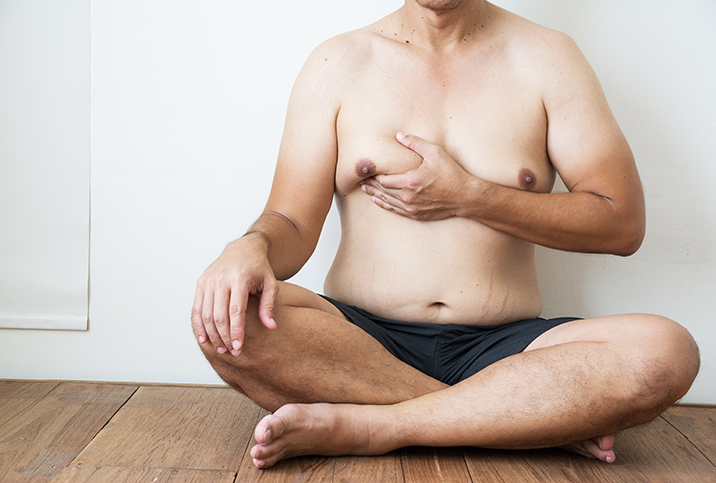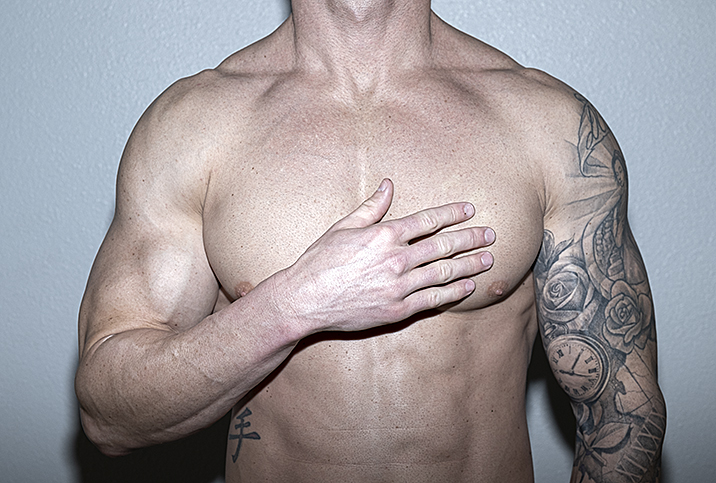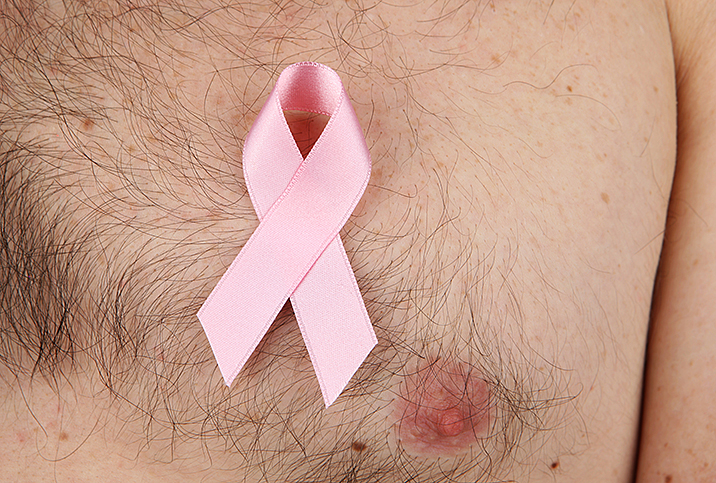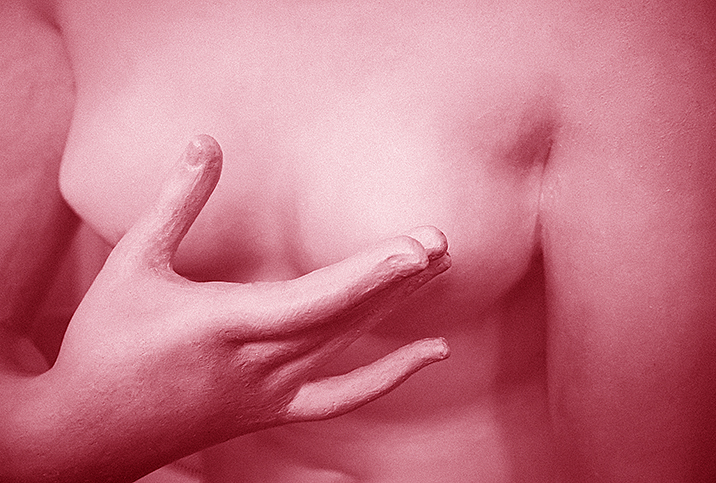Please Stop Believing These Male Breast Cancer Inaccuracies
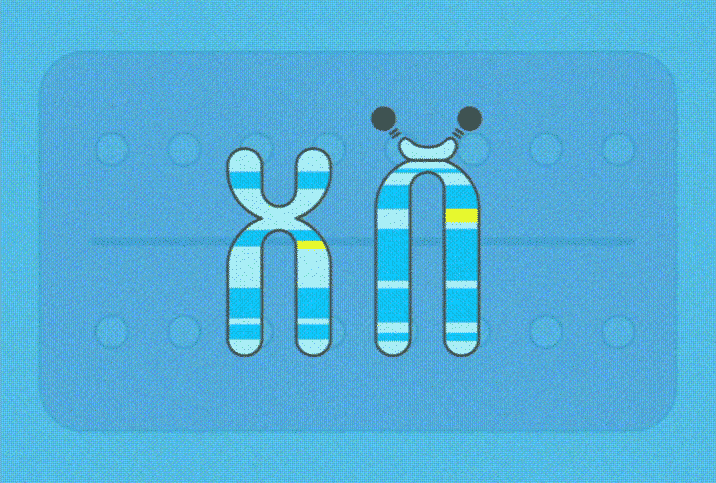
Every year in the United States, about 2,400 men are diagnosed with breast cancer and about 500 men die from the disease. Those numbers are much smaller than the rates of breast cancer in women, and men often get overlooked in breast cancer awareness campaigns, outreach and education.
This gap leads to confusion and a serious lack of awareness among men about what cancer signs to look for and what they can do to prevent the disease. We talked to experts about the inaccuracies they see on a daily basis when dealing with male breast cancer cases.
Inaccuracy #1
Men can't get breast cancer
This is clearly not correct. But this inaccuracy is still floating around, so it's important to emphatically state: Men do get breast cancer and should know the signs.
"Anyone with breast tissue is at risk of the development of breast cancer," said Jenn Simmons, M.D., a functional medicine physician and integrative oncologist and the founder of Real Health MD in Philadelphia. "As both men and women are born with breast tissue, both are at risk of developing breast cancer."
The reason women get breast cancer at much higher rates is due to hormones.
"Breast tissue in women is far more 'active' due to the ratio of estrogen to testosterone in women, making breast cancer far more common in women," Simmons explained.
Another reason for the disparity lies in physiology.
"The incidence of breast cancer in men is far less than in women, in part, because although the breast tissue in both is similar, men have mainly fat and fibrous breast tissue, compared with women, who possess more glandular units, ducts and lobules," said Monique Gary, D.O., a breast surgical oncologist and the medical director of the Grand View Health/Penn Cancer Network cancer program in Sellersville, Pennsylvania.
The same genetic risks women face for breast cancer put men at risk as well. Mutations in certain inherited genes, such as those in the BRCA1 and BRCA2 genes, increase the chances of developing breast cancer.
Other risk factors include the following:
- Family history of breast cancer
- Hormone therapy treatment
- Obesity
- Radiation therapy
- Liver disease
- Klinefelter syndrome
A lack of awareness about the possibility of breast cancer in men can lead to a lot of unwarranted shame and stigma. Shame can increase the likelihood of pushing off necessary medical appointments.
"If you are a man who is experiencing a lump in your breast area, don't be ashamed or embarrassed. Cancer can affect anyone," said Laura Purdy, M.D., the chief medical officer at OpenLoop, a telehealth support service based in Des Moines, Iowa. "It is so important to seek out care as fast as you can and not delay a workup or treatment, especially for something such as fear or shame."
Inaccuracy #2
Self-exams are only for women
One of the ways in which women can detect lumps early is through routine self-exams. Not every medical organization recommends women give themselves breast exams, preferring instead that they schedule regular mammograms for better screening. Self-exams aren't always reliable when people don't know what they're looking for in the breasts.
For men, however, self-exams are encouraged.
"It is not recommended that men screen with mammograms," Simmons said. "Men typically do not have an abundance of breast tissue. Therefore, self-examination is sufficient for screening the male breast."
However, there are situations in which imaging might be suggested for men. A doctor may prescribe further examination in men with more breast tissue or men who discover a lump through a self-exam.
If a man develops asymmetry or firmness in their breast tissue, it may be necessary to do imaging, Purdy said.
"Mammogram might not always be the best first choice for imaging; it sometimes may be an ultrasound," she added. "But this is not something that we should recommend that men do routinely on a screening basis, like we do for women."
How do you conduct a self-exam?
Start by visually inspecting your breast tissue and nipples. Look for any changes in symmetry, size or shape, or inverted nipples. Next, lie down and use the pads of your fingers to apply varying pressure to your breast tissue. Feel for lumps or anything that feels different than the other tissue.
Take your time and use a methodical approach to ensure you check every inch of the breasts. If you're confused or want more guidance, there is no better resource than your doctor. They can walk you through the steps and advise how often self-exams are needed in your specific situation.
"Signs of concern to bring up to their physician include masses, pain, nipple retraction or inversion, skin dimpling, thickness and redness," Gary said.
Inaccuracy #3
Breast cancer is different in men and women
Not only do men and women share similar breast cancer risk factors, but the cancer typically presents similarly.
"The symptoms do not vary from one gender to another," Purdy said. "This would involve skin changes in the breast area, a mass, lump or firmness in the breast area. Sometimes it can also be common to have other symptoms, such as extreme fatigue or weight loss."
The most common types of breast cancer for men are the same as they are for women. According to the Centers for Disease Control and Prevention (CDC), those types are:
- Invasive ductal carcinoma. This is cancer that begins in the ducts and can spread outside to the breast tissue and beyond.
- Invasive lobular carcinoma. This starts in the lobules and then spreads outside to the breast tissue and beyond.
- Ductal carcinoma in situ (DCIS). This type starts and stays in the lining of the ducts, but it can lead to more invasive breast cancer.
Inaccuracy #4
Male breast cancer is treated differently
Breast cancer is treatable, and the survival rates for breast cancer patients are higher the earlier the cancer is detected, which is why awareness is so crucial. As soon as the cancer is found, treatment can begin.
Those treatments for breast cancer are the same for everyone.
"Treatments for breast cancer in men are similar to women," Gary confirmed. "Surgically, they can be treated with either breast conservation [lumpectomy] or mastectomy. Men can also have reconstructive surgery for symmetry, volume replacement, nipple recreation."
"Because the male breast is typically smaller and men tend to more often present with nipple involvement, they are more apt to undergo mastectomy as their surgical procedure," Simmons added. "That said, I have performed several successful lumpectomies on men during my surgical career."
Several medical treatments, such as oral medications, chemotherapy and radiation, are available depending on the tumor stage and subtype, Gary explained.
Prevention methods are similar, too, even though cancer cannot be 100 percent prevented. Know that nobody is at fault for contracting a disease that often comes from genetic mutations or other unknown reasons.
But there are steps you can take to keep your body as healthy as possible.
"The most important thing for everyone, male and female alike, is that prevention is the best medicine," Simmons said. "Whole-food, plant-based eating, prioritizing sleep, movement, stress management, toxin avoidance and purpose-driven living go a long way toward preventing disease, no matter what your genes say."
What is different about breast cancer in men and women is the awareness of the disease.
"The differences between male and female breast cancer really become more apparent when you look at the differences in resources, research and support," Gary said. "In a sea of pink, organizations such as the Male Breast Cancer Global Alliance help bring much-needed attention to the issues facing men who are in treatment and underrepresented in cancer research and support services."
The most important step—for men or women—is to find a qualified doctor who can determine the best treatment plan for your specific situation.
"It is so important to make sure that you are under the care of a compassionate oncologist who is up to date with the most recent treatment guidelines, so that you can ensure that you are receiving the highest-quality care for your breast cancer, no matter what gender you are and no matter what type of cancer you have been diagnosed with," Purdy emphasized.
If you don't have a doctor you see regularly, you should get one, especially if you suspect something might be amiss. Even sooner would be better.
Fortunately, telehealth makes it easy to connect with a doctor who can answer your questions and evaluate your situation. Many physicians offer video visits, which are a good way to see a doctor quickly since a lot of them have same-day appointments. Giddy telehealth is an easy-to-use online portal that provides access to hundreds of healthcare professionals whose expertise covers the full scope of medical care, including men's health.












